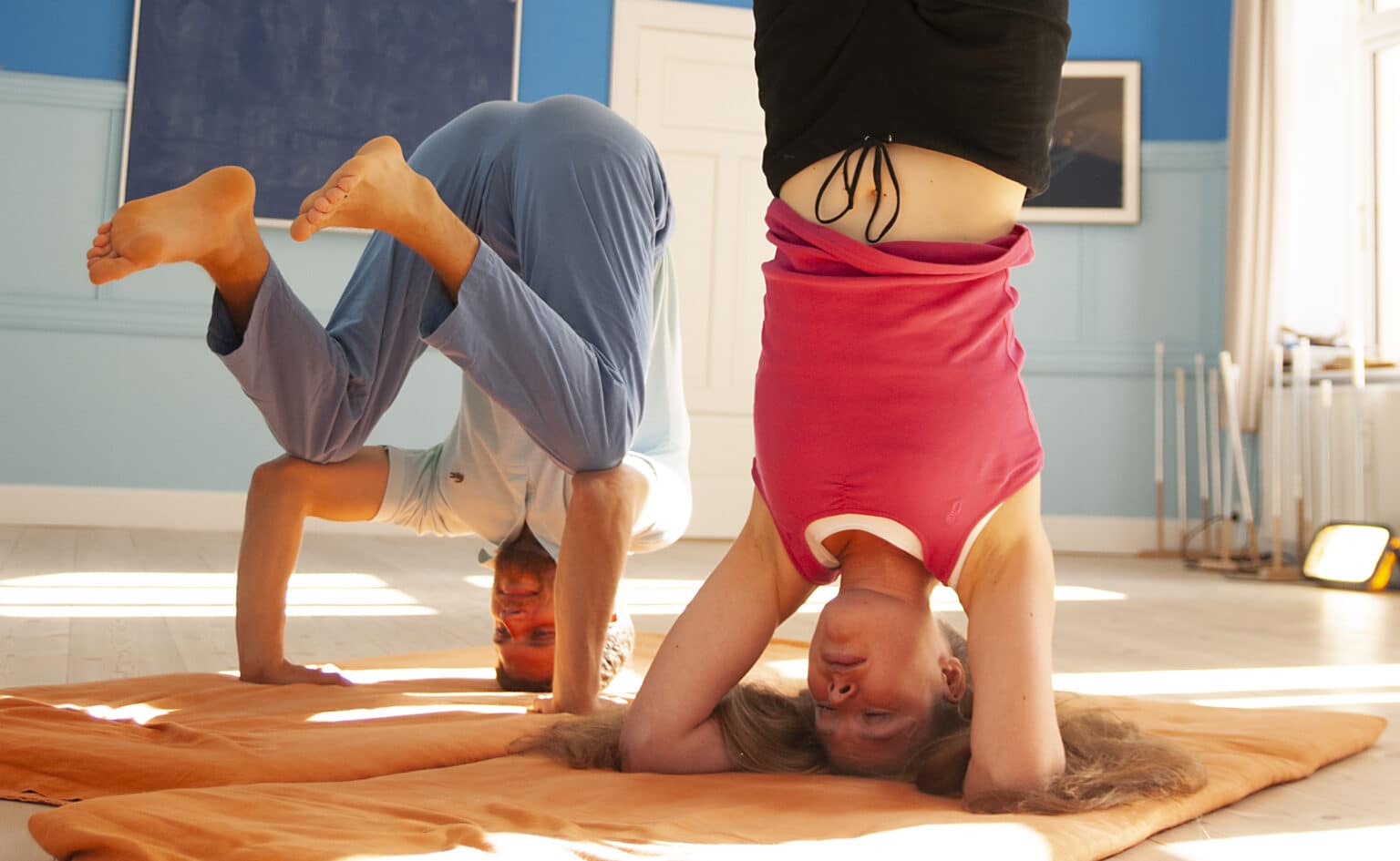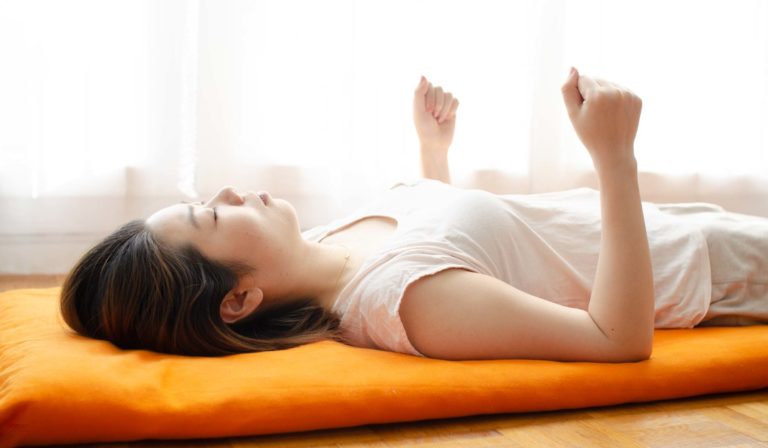Sirsasana, the full headstand, is one of the most essential yoga poses. However, it isn’t a beginner’s pose. It takes quite some effort to learn, and for some people, it is just too much. So wouldn’t it be fantastic if there was an easy alternative to headstand? Well, there is. It’s called the clown pose. And it is so straightforward that you can learn it even as a beginner to yoga. In this article, I will reveal everything you need to start doing it.
Best headstand for beginners
Some yoga teachers call the clown pose “easy headstand”. Others call it Sir Bakasana. It is not a widely used yoga pose, perhaps because it doesn’t look like much. That is a pity because it is such an accessible and helpful inversion. When I teach it to beginners, many manage to enter it on their first try. Others need a bit more time, but usually, after two-three classes, most people can get into it and stay at least for a short while.
Benefits of the clown pose
The benefits of the clown pose are the same as for the full headstand but not as pronounced. It calms you down and forces you to stay concentrated. The pose also relieves the heart and lungs. It reverses the effect of gravity for all your inner organs, which is revitalising.
I think that it is excellent that yoga students early on can get to enjoy these advantages. Furthermore, the clown pose prepares your neck and core muscles for more challenging inversions. It trains your balance by making you used to a head-down position. Practising the clown pose, will make full sirsasana easier once are ready for it.
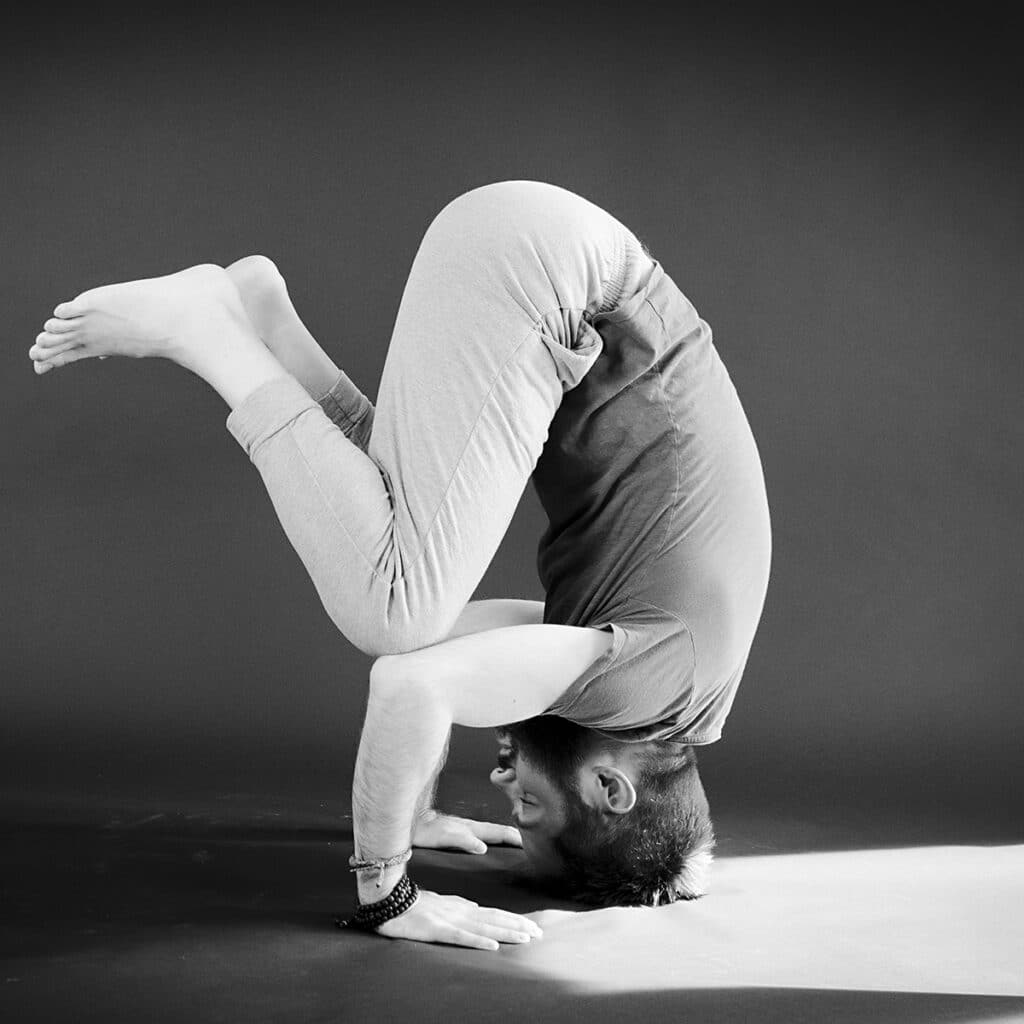
Counter indications
Most healthy people quickly learn to do the clown without any problems. But if your neck is particularly weak or fragile from injury or if you are severely overweight, you might need to modify it or do an alternative pose.
From a safety perspective, it makes sense to work with this easy alternative to the headstand for a while before moving on to full sirsasana. That way, you can spot any problems early on and avoid a pose that could be considerably more problematic for you.
Preparations
To do the clown pose, you need a yoga mat, a thick towel or similar so that you don’t have to place your head directly on the floor. But don’t make it too thick since that will destabilise your neck make it harder for you to maintain balance. If you are using a latex yoga mat, folding the end of it closest to you once should be good. You could also place a folded blanket on your mat to make it softer.
For safety, you also need to see to it that you have plenty of space around you. If you practice at home, make sure not to practice close to furniture.
Step by step instructions
- Sit on your knees in front of your mat.
- Place your hands on the floor next to your knees.
- Place the top of your head on the ground in front of you. Also, be sure that your forearms are positioned vertically and keep your elbows close to your body. Don’t let them point out to the sides.
- Straighten your legs and raise your knees from the ground. Separate your feet.
- With small steps, walk your feet forward until your knees are close to your elbows. Place the right knee on the right elbow and the left knee on the left elbow.
- With small steps, walk your feet forward until your knees are close to your elbows. Place the right knee on the right elbow and the left knee on the left elbow.
- Finally, while keeping your knees on your elbows, raise your feet from the floor and find your balance.
Tips:
- Getting the position of the head right is paramount. You want your neck to be in a straight position. You achieve that by placing the top of your head on the floor. Some people are inclined to position themselves too close to the forehead so pay particular attention to that.
- If this pose is tough on your wrists, turn your hands out to the sides to get a more gentle angle between your hands and forearms. As a bonus, this will make the pose more stable.
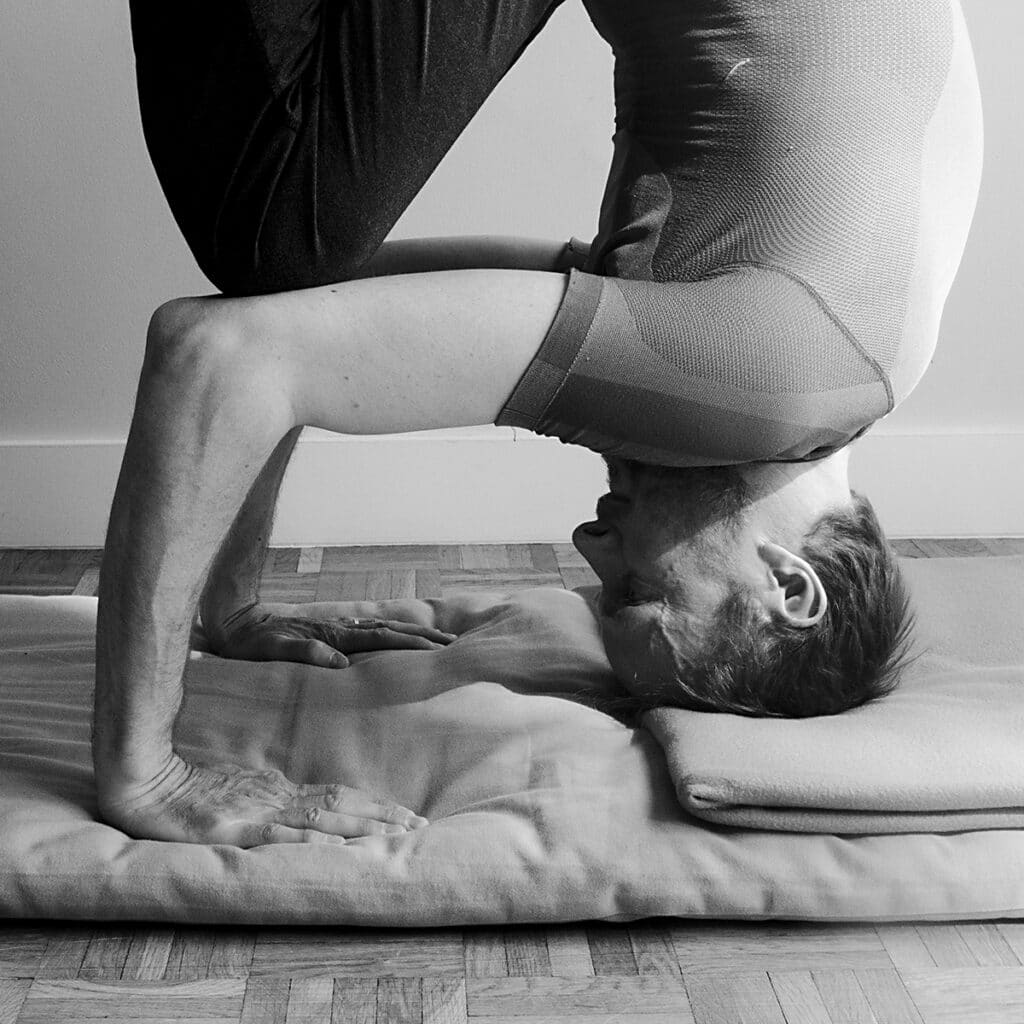
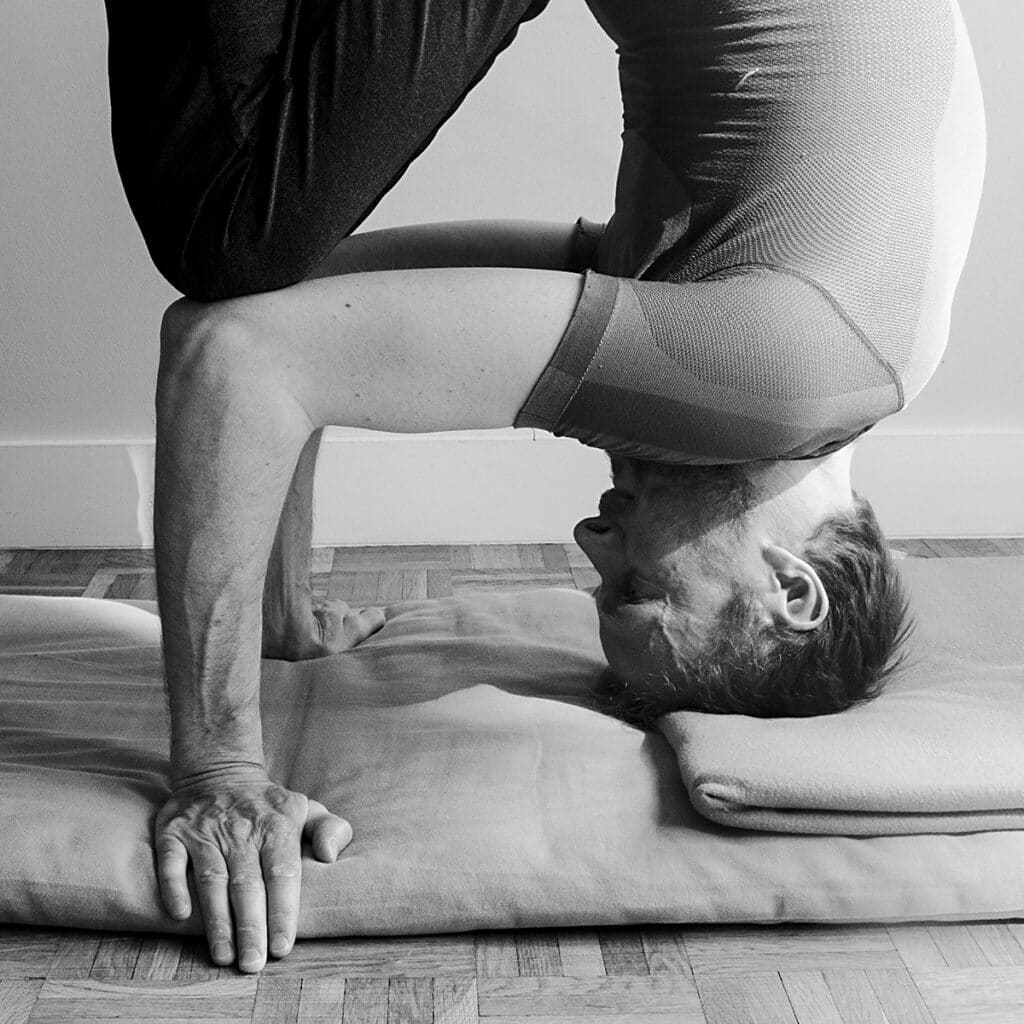
- Look at how you place your hands and your head. These three points should form an equilateral triangle. This triangle is your base of balance. Make sure the triangle isn’t too small. In that case, it will be challenging to keep your balance.
- Place your knees caps on your elbows. Some people tend to place their thighs on the elbows instead. This is not good for balance, and it isn’t easy to maintain anyway.
What if the clown pose is too much for you?
Even though this is a beginner-friendly headstand variation, it might be too much for you. If the pose provokes neck pain or gives you other issues, I encourage you to be careful. Always use your good judgement; no one knows your body better than you do.
To make the pose less intense for your neck, you can come into it only halfway. That is, without raising your feet from the floor.
How long to stay in the clown pose
When you first learn the clown pose, staying a minute is enough. If it is challenging for you to stay, you might come in and out of it a few times. But in that case, avoid unecessary movements to keep your calm and concentration.
Once you have gotten used to the pose, two to three minutes is excellent. For a more substantial effect, you can stay much longer if you like.
Counterpose to the clown
When you come out of the clown pose, stand up on your feet. Stand with your eyes closed for some time while noticing the sensations in your body.
Then do the stretching palm as counterpose:
- Interlace your fingers with the palms of your hands turned downwards.
- Raise your arms above your head and look upwards.
- Breathe in and come up on the tips of your toes.
- Hold your breath and stay for as long as you can holding your breath. Then breathe out, come down onto your heels, lower your arms and let your arms hang along your sides.
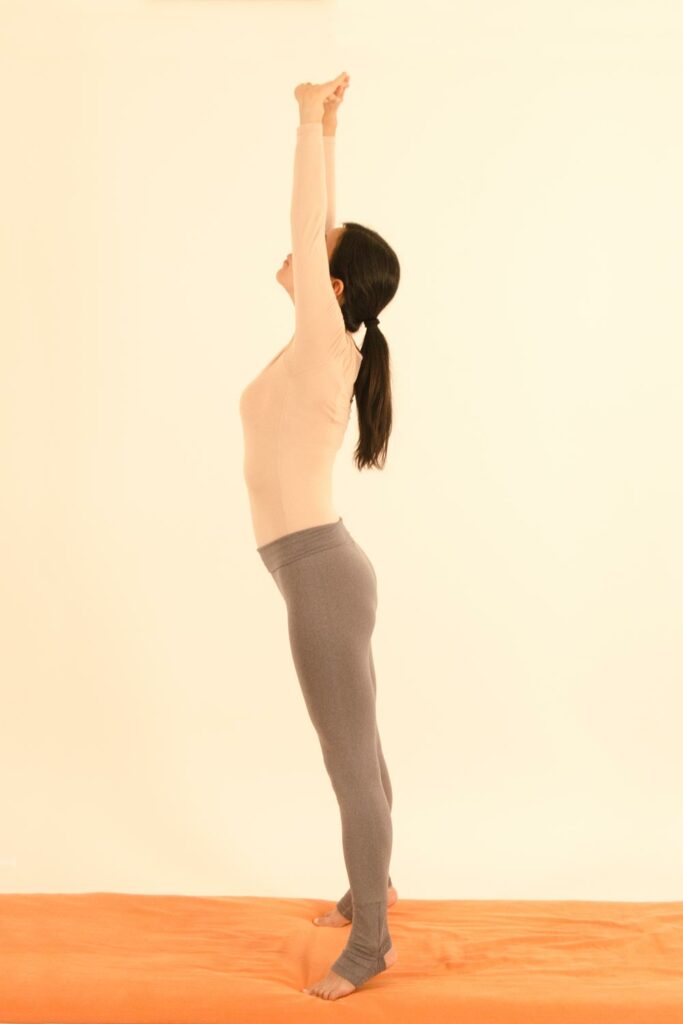
Doing a counterpose is essential to getting optimal benefits from any inversion. If you don’t, the effects of the pose won’t integrate agreeably.
When to do the clown pose
You can begin using this easy headstand alternative very early on in your yoga journey. In my yoga sessions here on Forceful Tranquility, I introduce the clown pose already in the third session. You can use it as a replacement for the headstand in any yoga programme.
The clown pose is an asana you can keep practising even as you become comfortable with more advanced headstands. Since it is more gentle, you will be able to stay in it considerably longer. That makes it a good inversion for practising body or breath awareness or even concentration on Sahasrara chakra on the top of the head.
Headstand substitute for pregnant women
The clown pose is also an excellent headstand substitute for pregnant women. But if you start yoga during pregnancy, you should not push it, if it makes you feel uncomfortable. However, if you are courageous or have already mastered the clown pose, reversing gravity can give you a pleasant relief.
Key takeaways
The clown pose is the best headstand for beginners. You can start practising it already at the beginning of your yoga odyssey. It will give you the same benefits as a full headstand but to a lesser extent. It will prepare your body for more advanced inversions as well as train your balance and self-confidence. Practising this easy alternative to the headstand will make the transition to the full pose safer and more enjoyable once you get there.
